A Smooth Guide on How Often to Change Razor Blades
Razor blades are an essential tool in our daily GROOMING routine, and their sharpness and precision are crucial for a clean, close shave.
However, the frequency of changing razor blades is a subject that has sparked considerable debate among users and experts alike.
In this comprehensive guide, I will delve into the factors that contribute to the dulling of BLADES, the signs that indicate it is time to replace them and the potential consequences of not doing so.
Furthermore, I will explore how different types of razors, such as disposable, cartridge, and safety razors, may necessitate varying replacement schedules, and provide tips on how to maximize the lifespan of your blades.
By understanding the importance of timely blade replacement and knowing when to make the switch, you can ensure a smooth and comfortable shaving experience.
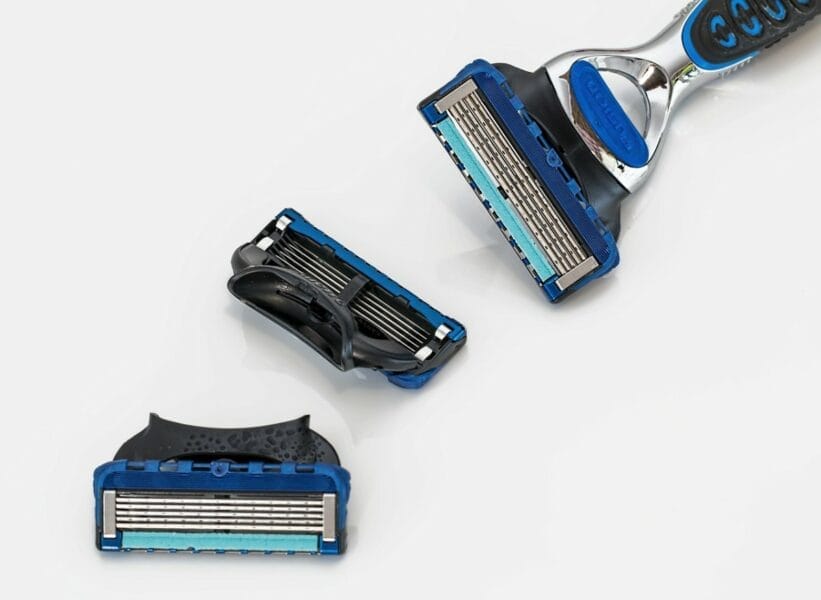
Signs That It’s Time to Change Your Razor Blade
1. Dull Blade
As a professional HAIRSTYLIST, I cannot emphasize enough the importance of a sharp razor blade for a smooth, close shave.
When the blade becomes dull, it struggles to glide over the skin and can cause discomfort or even damage.
I often tell my clients that they should pay attention to the sharpness of their blades, as it directly affects the quality of their shave.
So, how often to change razor blades? The answer depends on individual usage, but a good rule of thumb is to change it after every 5-7 shaves, or when you start to notice it losing its sharpness.
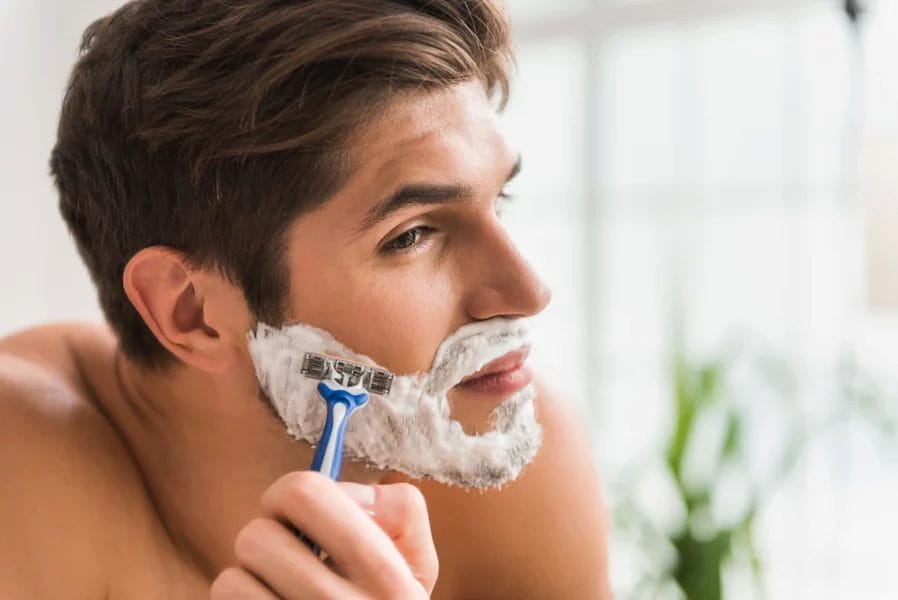
2. Tugging Sensation
When you experience a tugging or pulling sensation while shaving, it’s a clear indicator that the razor blade is no longer as sharp as it should be.
This not only makes the process uncomfortable but can also lead to uneven results.
In my experience, a quality shave should feel effortless and smooth, and any sign of tugging means it’s time for a replacement.
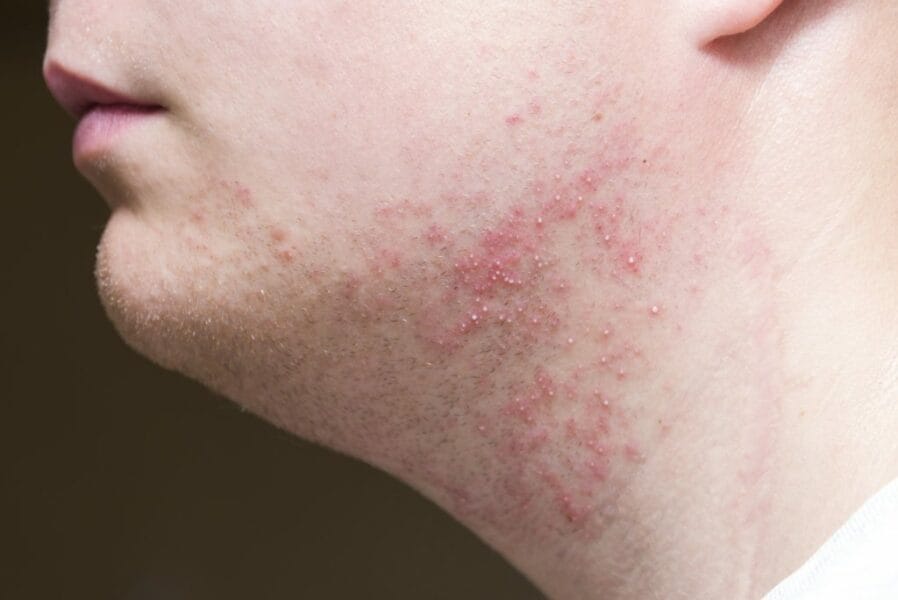
3. Rust or Discoloration
Rust or discoloration on a razor blade is a telltale sign that it’s time to change it. Using a rusty blade can introduce bacteria to your skin, leading to potential infections and skin irritation.
As a hairstylist, I always advise my clients to store their razors in a dry place to prevent rust formation and to replace them as soon as any discoloration appears.
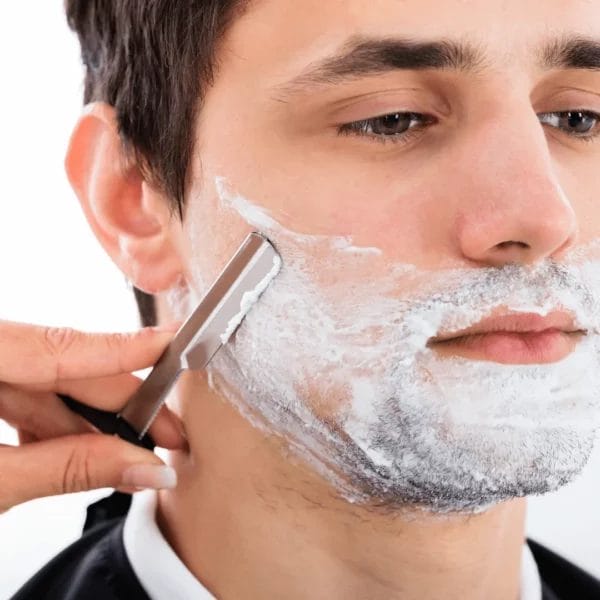
4. Multiple Nicks or Cuts
If you’ve been using the same razor blade for a while and suddenly start experiencing more nicks or cuts than usual, it’s a sign that the blade is no longer in optimal condition.
I’ve found that a sharp blade reduces the risk of these injuries, providing a safer and more comfortable shave.
So, it’s best to change your razor blades before they become a hazard.

5. Ineffective Shave
An ineffective shave can be frustrating and time-consuming.
As a professional, I know that a dull blade fails to remove hair efficiently, often requiring multiple passes to achieve the desired result.
If you’re struggling to get a clean shave with your current blade, it’s a good indication that it’s time for a change.
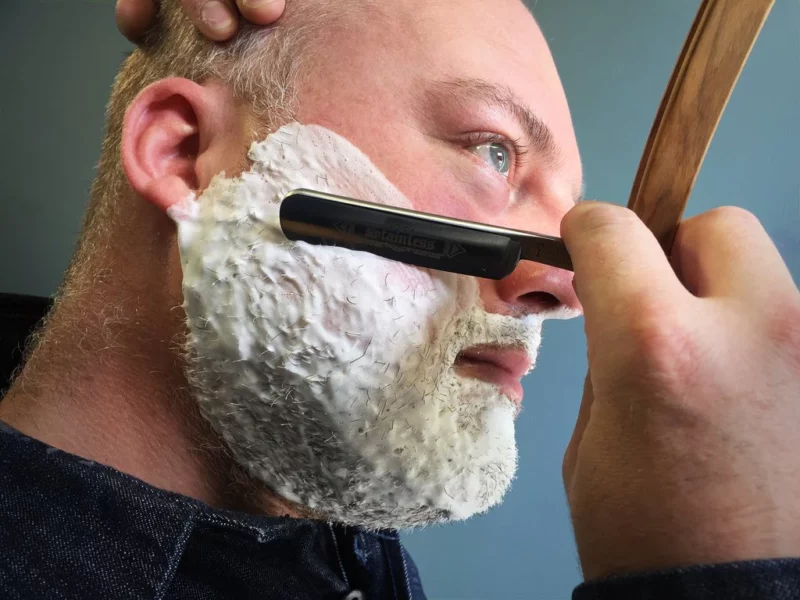
6. Skin Irritation
When clients come to me with skin irritation after shaving, one of the first things I check is their razor blade’s condition.
A dull or damaged blade can cause redness, bumps, and even ingrown hairs. By changing the blade regularly, you can minimize these issues and maintain healthy, smooth skin.
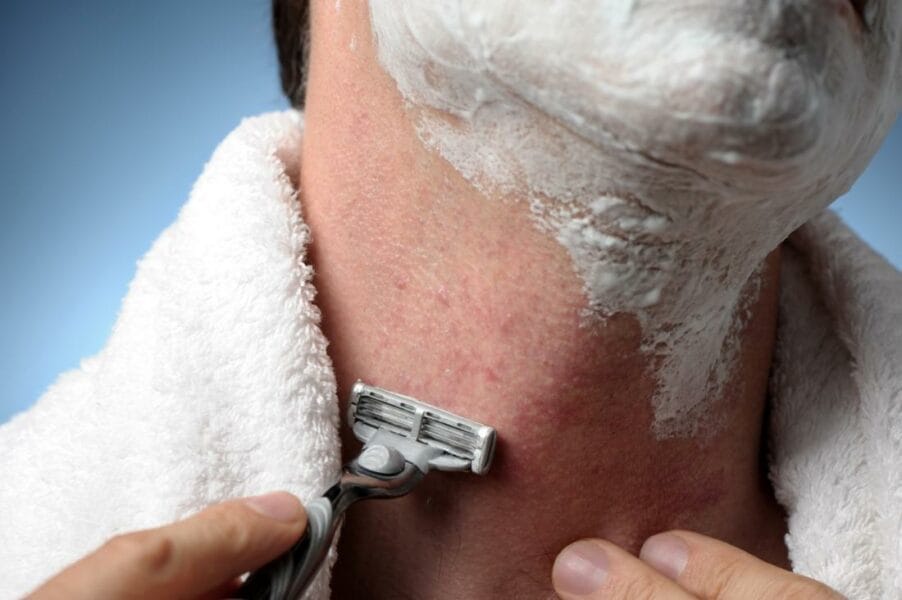
7. Longer Shave Time
Finally, one of the most noticeable signs that it’s time to change your razor blade is an increase in the time it takes to shave.
As a hairstylist, I know that efficiency is crucial, and a dull blade can slow you down significantly.
By replacing your razor blades regularly, you can ensure a quicker, more enjoyable shaving experience.

Guidelines for Changing Razor Blades
I often get asked, “How often should I change my razor blades?” The answer is not straightforward since it depends on the type of razor you are using and how often you shave.
In this section, I will share my personal insights and guidelines for changing the blades of different types of razors.
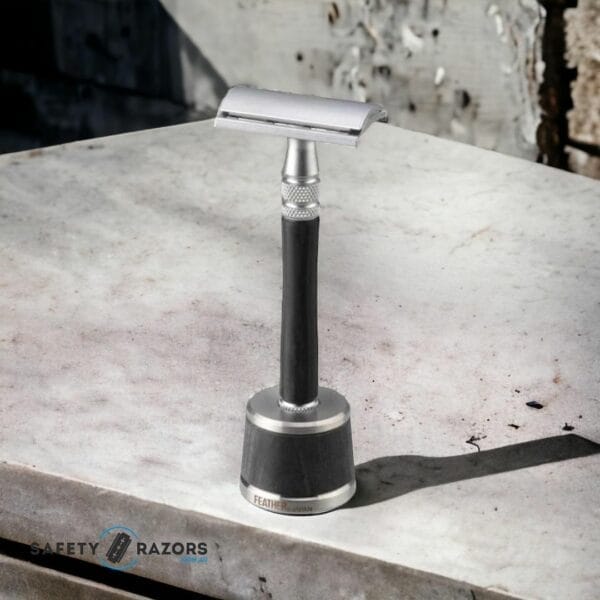
Disposable Razors
Disposable razors are designed for short-term use, and as a result, their blades are not as durable as those found in other types of razors.
From my experience, I recommend changing disposable razors every 3 to 4 uses. Of course, this depends on the thickness of your hair and how often you shave.
If you have coarse hair or shave daily, you might need to change the blade even more frequently.

Cartridge Razors
Cartridge razors are a popular choice among my clients because they are convenient and easy to use.
When it comes to changing the BLADES, the keyword “How often to change razor blades” applies differently to each individual.
Generally, I recommend replacing cartridge razors after about 5 to 10 shaves. However, you should pay attention to the SHARPNESS and performance of the blade.
If you notice any tugging or discomfort while shaving, it’s time to change the cartridge.
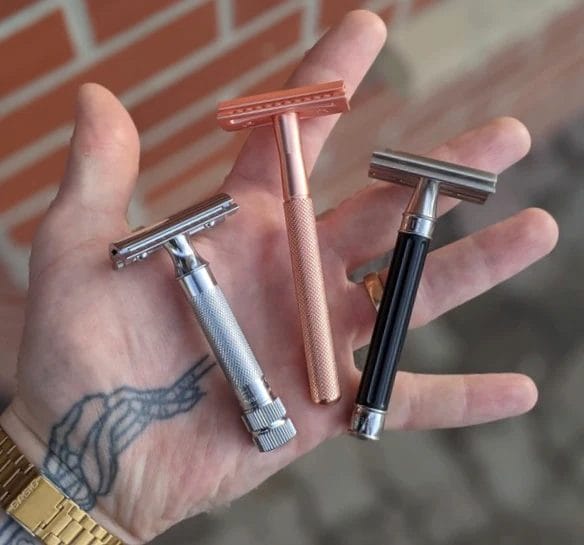
Safety Razors
Safety razors offer a more traditional and eco-friendly approach to shaving.
Their blades are typically made of higher-quality metal, which means they can last longer than disposable or CARTRIDGE razors.
From my professional standpoint, I suggest changing the blades of a safety razor after every 4 to 7 shaves.
Remember to pay close attention to the sharpness of the blade. If it starts to feel dull or you experience any irritation, it’s time to replace the blade.
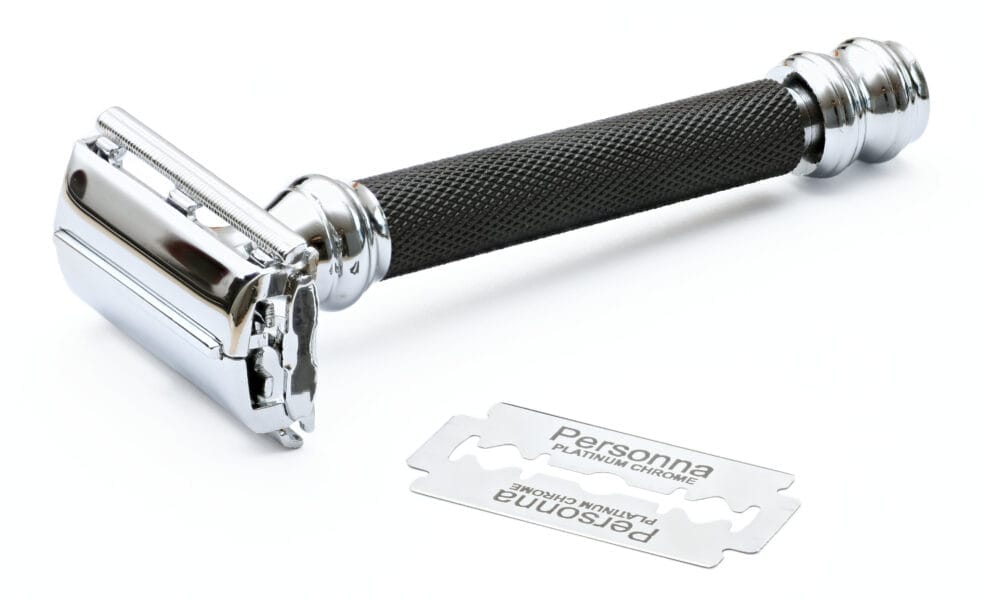
Straight Razors
Straight razors are the choice of many professionals, including myself, because they provide an incredibly close and precise shave.
These razors require more skill to use, but they also have the benefit of having a blade that can last for years if properly maintained.
It is advisable to focus on honing and stropping your straight razor to maintain its sharpness.
In general, stropping should be done before each shave, while honing should be done every few months, depending on how often you use the razor.
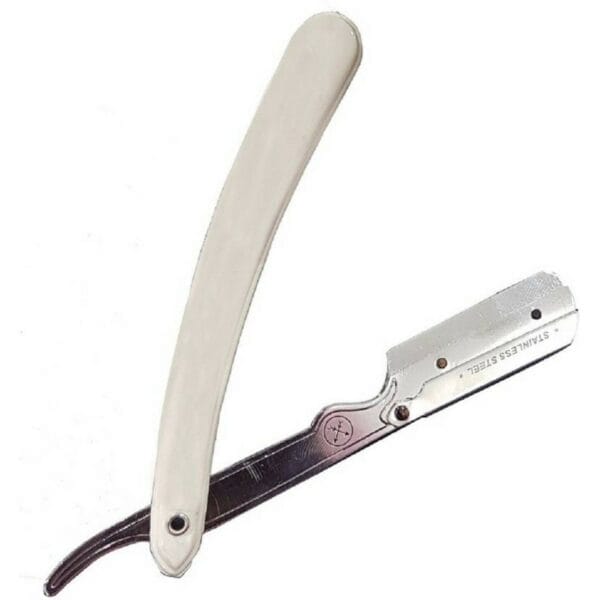
Factors Affecting Razor Blade Lifespan
As a professional hairstylist, I understand the importance of using sharp and well-maintained tools.
One tool that often gets overlooked is the razor blade. A key aspect to consider when determining how often to change razor blades is the different factors that impact their longevity.
These factors include the type of razor, frequency of use, hair type and thickness, and proper maintenance and storage.
By understanding these elements, you can ensure that you’re using your razor blades safely and effectively.

Type of Razor
There are various types of razors available, and the kind you use can significantly impact how often to change razor blades.
For instance, disposable razors are designed for limited use and should be replaced after a few shaves.
On the other hand, safety razors and straight razors use replaceable blades, which can last longer depending on their quality and usage.
As a hairstylist, I always recommend investing in a high-quality razor to ensure better performance and longevity.

Frequency of Use
The more frequently you use your razor, the faster the blade will dull, making it essential to change the blade more often.
If you shave daily, you may need to replace the blade every week or two, while guys who shave less frequently might only need to change the blade once a month.
As a general rule, it’s best to replace the blade when you feel it tugging or pulling on the hair, as this is a sign that the blade is becoming dull.
Hair Type and Thickness
Your hair type and thickness also play a significant role in determining how often to change razor blades.
Thicker, coarser hair can quickly dull a blade, requiring more frequent changes. Conversely, if you have fine or thin hair, your blade may last longer.
In my experience, it’s essential to pay attention to the performance of your razor and adjust the frequency of blade changes based on your individual needs.
Maintenance and Storage
Proper maintenance and storage can significantly extend the life of your razor blades. To maintain your razor, always rinse it thoroughly after each use to remove any hair, shaving cream, or debris.
Additionally, it’s crucial to dry the razor completely to prevent rust and corrosion, which can shorten the lifespan of the blade.
As a professional hairstylist, I recommend storing your razor in a dry, well-ventilated area to avoid moisture buildup, as this can also contribute to rust and corrosion.
Tips to Extend Razor Blade Life
1. Dry Your Blades Thoroughly After Each Use
As a professional hairstylist, I can’t emphasize enough the importance of drying your razor blades after each use.
Water is the enemy of razor blades as it can cause rusting and corrosion, which ultimately leads to a dull blade.
I recommend gently patting your razor blade dry with a soft towel or even using a hairdryer to ensure it’s completely dry. Trust me, taking this simple step will add more life to your blades.

2. Strop Your Blades on Denim
Believe it or not, stropping your razor blades on a piece of denim can help extend your life. I’ve been doing this for years, and it’s made a significant difference.
How often to change razor blades? It depends on your usage and the quality of the blade.
However, stropping can make a difference in the long run. Simply run the blade across the denim (away from the sharp edge) about ten times to align the micro-edges and keep the blade sharp.

3. Store Your Razor Blades in a Dry Place
As I mentioned earlier, water is the enemy of razor blades. That’s why it’s crucial to store your blades in a dry place after each use.
I recommend keeping them in a cabinet or drawer away from moisture. This will help prevent corrosion and rust, ultimately keeping your blades sharp for a more extended period.

4. Use Shaving Cream or Gel
When I shave, I always use a high-quality shaving cream or gel.
This is because it helps create a smoother surface for the blade to glide across, minimizing friction and reducing the chance of nicks and cuts.
Less friction means your razor blades will stay sharper for longer, allowing you to change them less frequently.
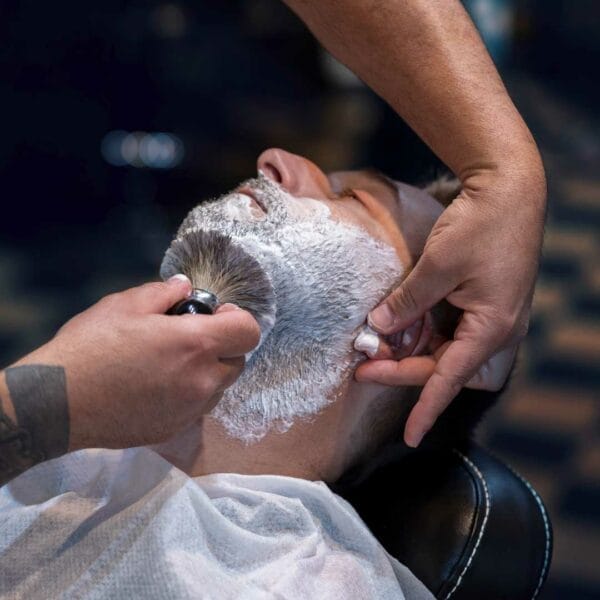
5. Avoid Pressing Too Hard
I’ve seen many clients pressing too hard when they shave, which not only causes irritation but also wears down the blade faster.
To extend the life of your razor blades, use a gentle touch and let the razor do the work. This will help keep your skin healthy and your razor blades sharp.

6. Rotate Multiple Blades
Lastly, as a professional HAIRSTYLIST, I suggest rotating multiple razor blades to extend their life.
By switching between blades, you’re allowing them to rest and recover, much like athletes do when they rotate their training days.
This gives the blades a chance to stay sharp and in tip-top condition for longer periods.
By following these six tips, you’ll be well on your way to extending the life of your razor blades.
Remember that how often to change razor blades depends on various factors, but these tips will help you get the most out of each blade.

Conclusion
In conclusion, the frequency of changing razor blades depends on various factors such as the quality of the blade, the COARSENESS of your hair, the sensitivity of your skin, and how often you shave.
As a general guideline, it is recommended to change your razor blade after 5-10 shaves or when you start to experience discomfort, tugging, or IRRITATION.
FAQs
How long do razor blades really last?
As a professional hairstylist, I often get asked about the longevity of razor blades.
In my experience, the lifespan of a razor blade can vary depending on the quality of the blade, how often it is used, and how well it is maintained.
On average, a high-quality razor blade can last anywhere from 5 to 10 shaves. However, it’s important to note that factors like hair type and shaving technique can influence the longevity of the blade.
For instance, if you have coarse or thick hair, the blade may dull more quickly than if you have fine hair.
To ensure the best possible shaving experience, it’s crucial to know how often to change razor blades.
How do you know when to change razor blades?
As a hairstylist, I believe it’s essential to listen to your body and be aware of the signs that indicate it’s time to change your razor blade.
Common indications that your razor blade is getting dull include tugging or pulling on the hair, increased skin irritation, or a less effective shave.
When I notice any of these signs, I know it’s time to switch out the blade.
By staying vigilant and changing your razor blade regularly, you can help prevent razor burns, ingrown hairs, and other skin irritations associated with dull blades.
How often should you sharpen your razor?
The frequency of sharpening your razor depends on the type of razor you are using.
For instance, a straight razor typically needs to be sharpened every few months, depending on how often it is used.
As a hairstylist, I recommend using a high-quality leather strop to maintain the sharpness of your straight razor.
If you’re using a safety razor or cartridge razor, you won’t need to sharpen the blades, as these are designed to be replaced when they become dull.
Remember that knowing how often to change razor blades is key to maintaining a comfortable and effective shave.
How many shaves does a razor last?
The number of shaves a razor can last depends on several factors, including the quality of the blade, the user’s hair type, and shaving habits.
Generally, a high-quality razor blade can provide you with 5 to 10 shaves before it needs to be replaced.
As a professional hairstylist, I advise my clients to pay close attention to their shaving experience and change the blade as soon as they notice any signs of dullness, such as tugging or skin irritation.
By doing so, you can ensure a smooth and comfortable shave every time.
How do I know if my straight razor is dull?
As someone who works with hair daily, I understand the importance of using a sharp straight razor.
A dull razor can lead to an uncomfortable shave, skin irritation, and even cuts. To determine if your straight razor is dull, you can perform a few simple tests.
One common method is the hanging hair test, where you hold a single hair between your fingers and gently touch it with the razor’s edge.
If the razor slices the hair easily, it’s sharp; if not, it likely needs to be honed. Another test is to gently glide the razor across your thumbnail, being careful not to cut yourself.
A sharp razor will “bite” into the nail, while a dull one will slide across it without resistance.
By regularly checking your straight razor’s sharpness, you’ll know when it’s time to hone or strop it, ensuring a comfortable shave every time.
References:
A razor is a bladed tool primarily used in the removal of body hair through the act of shaving. source
Most people have probably shaved with a razor that sat unchanged for longer than they care to admit. source
Khamis Maiouf is a professional barber who graduated from Hinckley College in England with a degree in hairdressing. He has also won several barbering contests and successfully operated a barbershop for the last two decades. As a skilled hair stylist for 20 years, his goal is to teach others how to achieve a beautiful appearance through their hairstyles.
